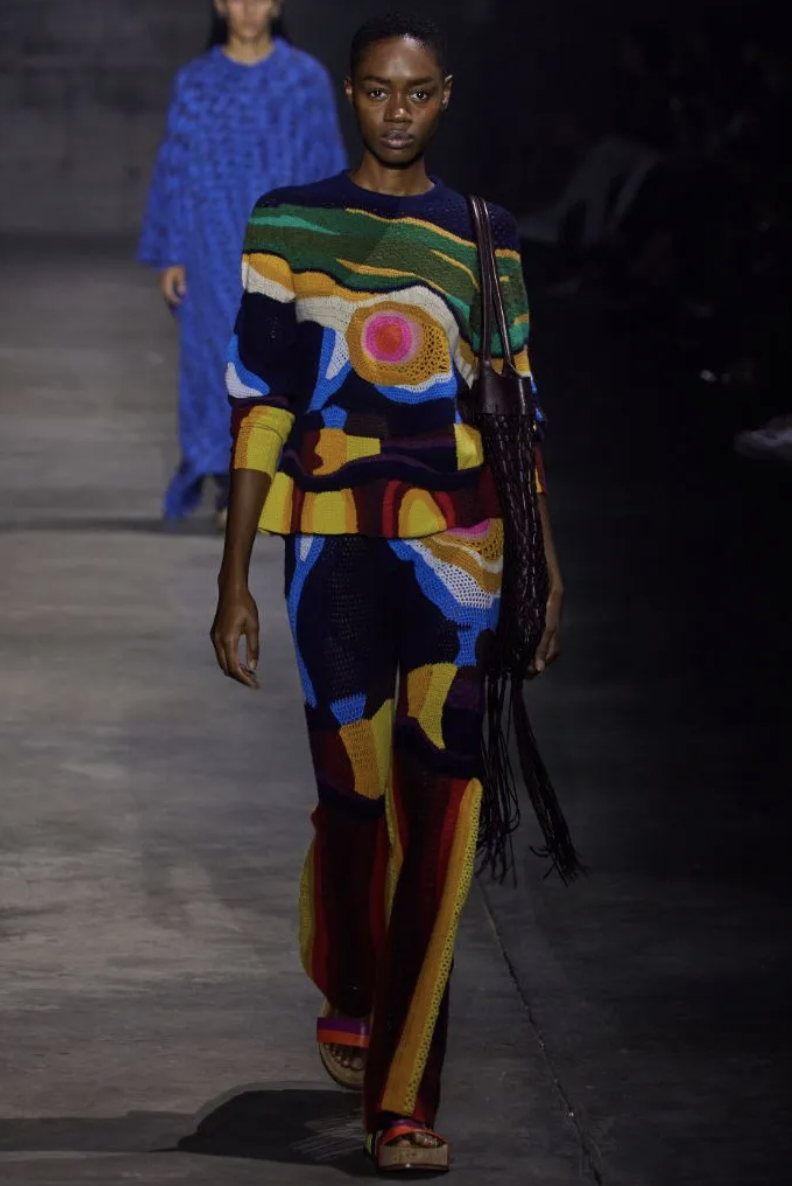Defining femininity from NYFW 2021
Image Courtesy: Strike UGA
Ideas of gender and femininity have always been a point of contention in the fashion world. Fashion can shape the way we define femininity while reflecting society’s views of womanhood. New York Fashion Week is the time we see where culture and fashion for the next year is heading- it is the perfect moment to reflect on depictions of femininity. Here’s a look at several designer’s takes on the female form this year.
Moschino’s Ladies Who Lunch
Ladies Who Lunch is like a baby’s fever dream. From three-piece tweed suits in pastel colors decked out with chunky toy-like jewelry to patterns with children’s teddy bears and lambs, the collection confuses motherhood with childhood.
The designs are campy and eclectic. As a statement on motherhood, perhaps turning the maternal into fashionable, the collection succeeds. It’s fun, lighthearted and it has an attitude, comparable to a collection of angry mothers who raided their baby’s toy chest. Instead of denying motherhood, as corporate America is so keen to have women do, it shows the junction between empowerment and femininity- the new working mother who isn’t afraid to let everybody know it even if it means making earrings out of teething rings.
Gabriela Hearst
Gabriela Hearst’s collection stood out in a storm of textiles and fabric art. Her pieces stick to mostly rich, earthy tones while celebrating the craftsmanship of the textiles. The designs aren’t very structured or rigid. Instead, the pieces imply comfort, even down to the platform sandals. According to the New York Times, Hearst’s knits were created by artisans in Bolivia, Uruguay and the Navajo Nation. Her collection suggests that women in power crave comfort and beauty at the same time. Even the business suits look like something I could wear for eight hours a day without complaint.
Thom Browne
Thom Browne is generally known for his men’s collections, but his runway this year was particularly striking, as it blurs the line between men's and women’s fashion.
The silhouettes are boxy at the shoulders and not particularly form-fitting, giving the idea that Browne paid little attention to whether he was dressing a man or a woman. He makes the suggestion that the future of fashion might bring about more androgyny even if it isn’t quite to this extreme.
Strike Out,
Olivia Wakim
Athens





